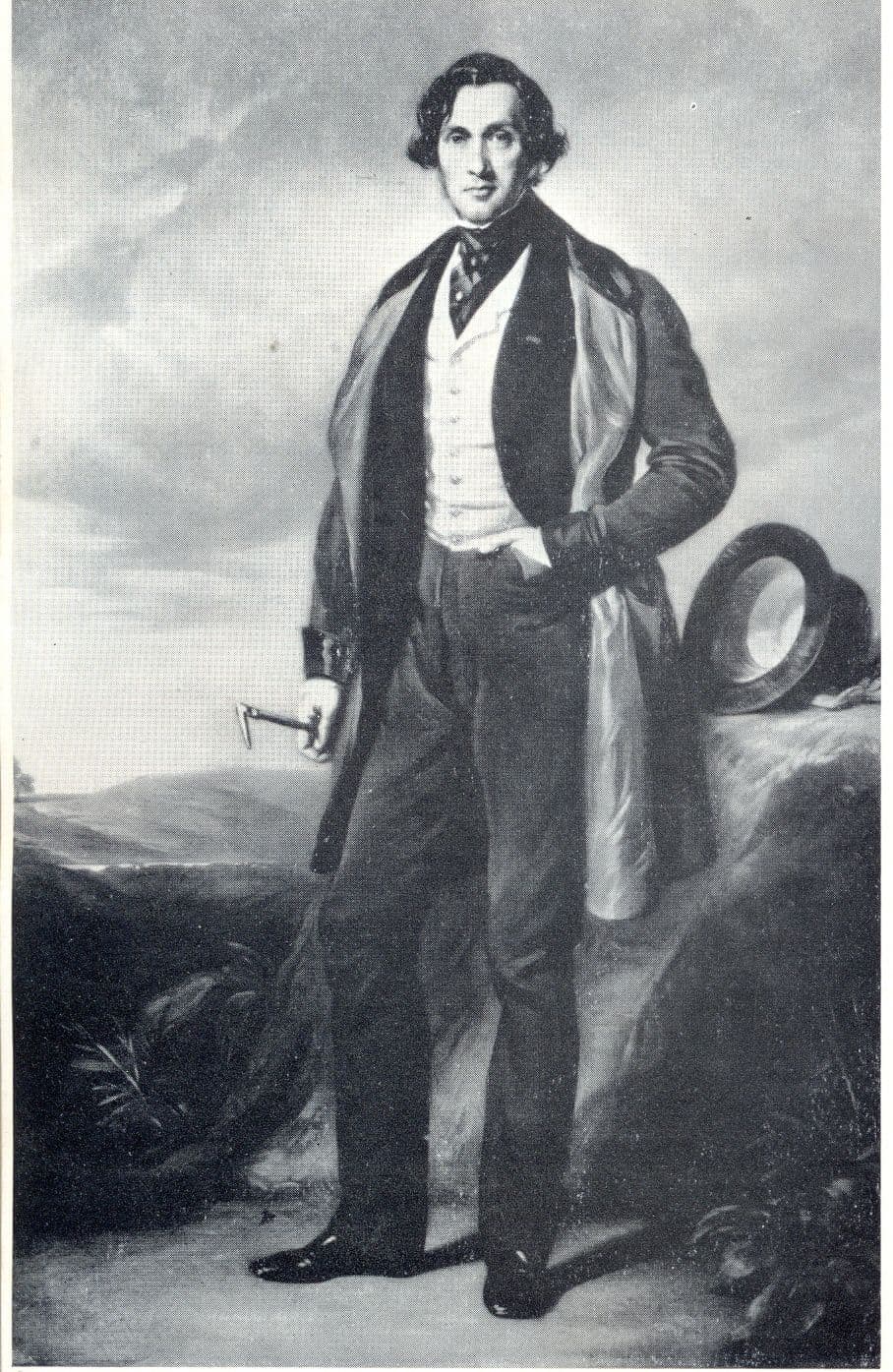 |
Joseph Locke
Frances Collingwood. Joseph Locke |
Marshall records that Locke was born at Attercliffe near Sheffield on 9 August.1805 and died at Moffat in Dumfriesshire on 18 September1860. Michael R. Bailey has since written an excellent concise biography in Chrimes: the only "failing" being that his contribution to locomotive engineering is ignored (see Stuart's The Crewe type (Loco Profile No. 15). Locke was a notable civil engineer. He was the fourth and youngest son of William Locke, colliery manager. He was educated at Barnsley Grammar School from 1810 to 1820, and was then pupil of William Stobart of Pelaw, Durham, a colliery viewer. In 1823 he was articled to George Stephenson at Newcastle, with whom he remained to assist on the Liverpool & Manchester Railway. In 1832 he discovered errors in the survey of the tunnel from Edge Hill to Liverpool Lime Street station, and this led to a difference with Stephenson and Locke's resignation from the Liverpool & Manchester Railway, where he had the misfortune to be on the footplate of the locomotive which killed Huskisson. He set up on his own account and built the Grand Junction Railway . Initially this was from near Warrington to Whitmore, but following difficulties encountered by George Stephenson he also constructed the section onward to Birmingham (see Gilks). He then constructed the London & Southampton 1836-40; the Sheffield & Manchester, taken over from Vignoles, 1838-40; Lancaster & Preston Junction Railway, 1837-40; Paris to Rouen 1841-3 (see Gilks); Rouen-Havre 1843; Barcelona-Mattaro, 1847-8, and the Dutch Rhenish Railway, completed in 1856. In 1840, during construction of the continental works Locke took J. E. Errington into partnership and together they constructed the Lancaster & Carlisle line, 1843-6; parts of the East Lancashire R 1846 7; Scottish Central 1845; Caledonian Railway (Carlisle Glasgow and Edinburgh) 1848; Scottish Midland and Aberdeen Railways; Greenock docks; and a line from Mantes to Caen and Cherbourg, 1852.
Locke's lines were noted for their economy of construction and his avoidance of tunnels, but with summits like Shap and Beattock between Lancaster and Glasgow which were expensive to operate. His greatest monument is probably the London & Southampton mainline which manages to cross the great chalk ridges virtually without tunnels, but with massive cuttings and embankments and is, and always has been, a route designed for high speeds. The Lancaster & Carlisle line also shows his skills, ut at the cost of slower transits at least until tilting trains were fully exploited. He became MICE in 1830. In 1847 he was elected Liberal MP for Honiton, Devon. He presented Locke Park to Barnsley, Yorkshire where there is a statue of him. In 1834 he married Phoebe McCreery who died 15 December.1866.
Reed notes that Locke was sole chief engineer of the Grand Junction Railway from 1835 to 1846, and though engaged mainly on construction and civil engineering he had the top-level surveillance of the mechanical engineering side. He was the man who suggested Crewe as the site of the locomotive and rolling stock works, who drew up the first plans and estimates, and supervised the organisation of the factory. Thus Locke had a huge indirect influence on locomotive development.
Locke's plans for Crewe Works were barely adequate for the GJR and its foreseeable future in 1840-41, for already he had surveyed a trunk route from Lancashire to Scotland (Edinburgh and Glasgow) and knew the GJR was likely to become a big system. Further, his acquiescence in the building of Forge Street, Moss Street and other streets immediately north of the works prevented any extension in that direction, and left but a small amount of ground south of the original Chester line for what could only be inconvenient extensions. Crewe Works and the layout of the town nucleus and its approaches were perhaps the least far-seeing of all Locke's railway construction, and with the formation of the LNWR the difficulties were intensified. After consolidation of all three locomotive divisions of that railway were approved in principle in 1855 a great works extension on a new site was axiomatic, but by the time the first real extension was put in hand in 1864 Locke had passed on.
Statue in Locke Park, Barnsley see Backtrack, 2011, 25, 740
Biddle (Oxford Companion) notes that Locke's particular skill was as an organizer. He closely controlled contractors and expenditure and, unlike many contemporaries, completed his lines on time and within estimates, on many of which he worked closely with the contractors Brassey and Mackenzie. Biddle cites Webster. Biddle's biography in the Oxford Companion is better than that in his own Britain's historic railway buildings.
Webster, N., Joseph Locke,
Railway Revolutionary 1970
Min. Proc. Instn. Civ. Engrs., 20 1860 pp 141 8;
Engineer V 10 9.1860 p 194;
Walker, Charles, Thomas Brassey,
Railway Builder 1969;
Nock, O.S., The Railway Engineers 1955;
Williams, R. ., The London & South Western R V 1 1968;
Rolt, L.T.C., Great Engineers 1962;
Morgan, Brian, Railways, Civil
Engineering 1971;
Devey, Joseph, The Life of Joseph Locke 1862
Gilks, David. Joseph
Locke and the Stephensons. Backtrack, 2005, 19,. 368-73.
and 496 et seq.
Excellent reproductions of portraits (in black & white)
Oxford Dictionary of National Biography includes entry by G.C. Boase revised by Raplh Harrington.
2020-04-24
